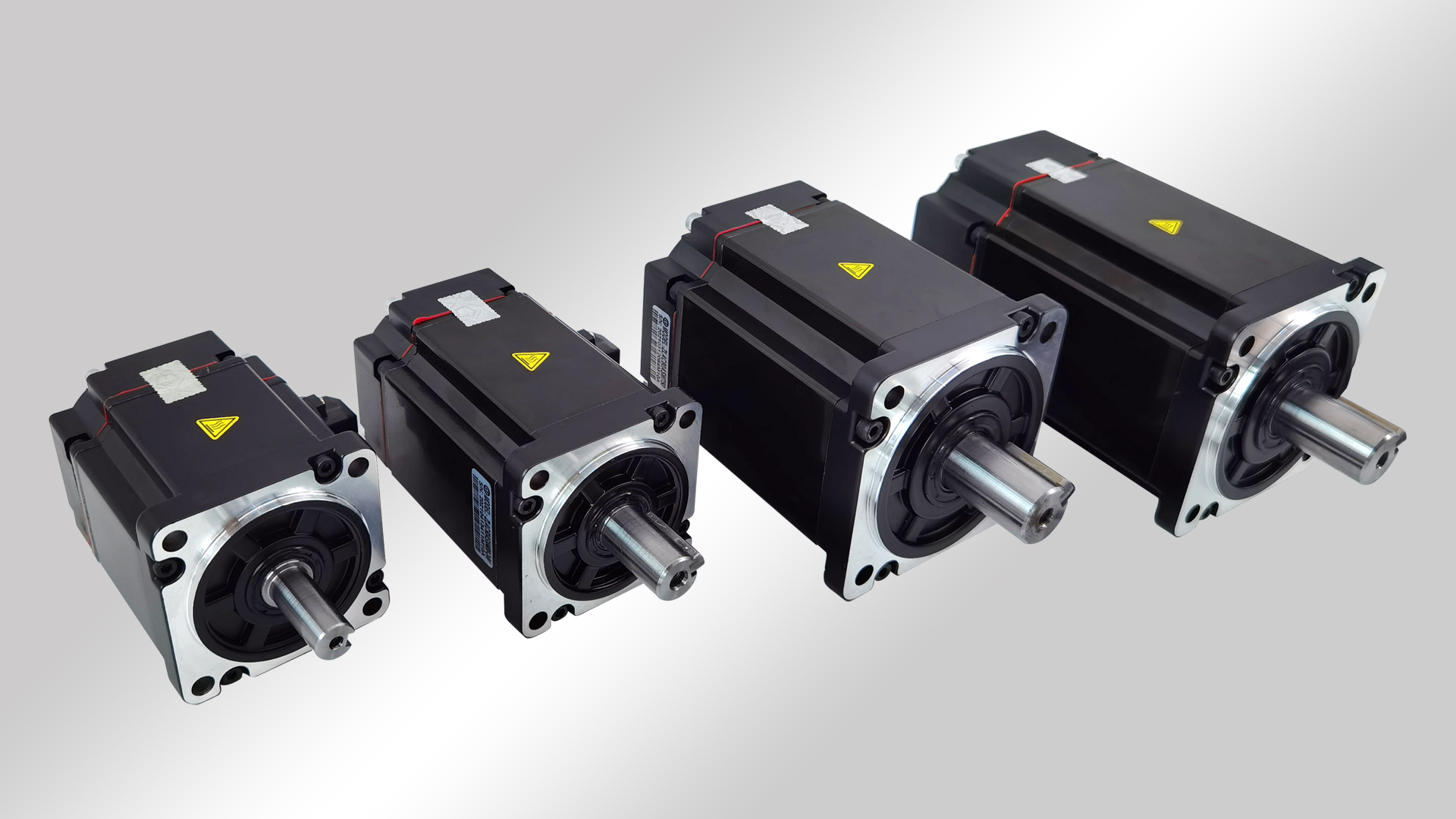servo motorEncoder is a type of sensor installed on servo motors to measure the position of magnetic poles and the rotation angle and speed of servo motors. From the perspective of different physical media, servo motor encoders can be divided into photoelectric encoders and magneto electric encoders. In addition, rotary transformers are also considered a special type of servo encoder, and most commonly used in the market are photoelectric encoders. However, as a rising star, magneto electric encoders have the characteristics of reliability, low price, and resistance to pollution, and have a trend to surpass photoelectric encoders.
There are many types of encoders, the most commonly used being absolute value encoders, incremental encoders, and rotary transformers, as well as some higher communication encoders. For servo motors, in order to achieve very high performance and accuracy, it is necessary to improve the resolution of the encoder. The commonly used servo encoder has 2000-2500 lines (pulse count/revolution), but the higher the number of lines, the more expensive the encoder is. Therefore, it is necessary to understand the requirements of the control system to choose the most suitable encoder. For incremental encoders, they are most commonly used, but the biggest problem is that the power off position is lost, so to maintain the power off position, absolute value encoders can be used; If the mechanical vibration is large, it is not appropriate to use a photoelectric encoder, which requires the use of a rotary transformer or magnetic encoder. The servo driver and encoder are two essential components of the servo system. The control part of the servo driver obtains the rotor speed, rotor position, and mechanical position by reading the encoder, which can complete the speed control of the servo motor, torque control of the servo motor, mechanical position synchronization tracking (multiple transmission points), and fixed-point parking.
Optical encoders have always been a popular choice in the motion control application market. It consists of an LED light source (usually an infrared light source) and a photodetector, located on both sides of the encoder encoder disk. The coder is made of plastic or glass, with a series of transparent and opaque lines or slots arranged at intervals on top. When the encoder rotates, the LED light path is blocked by the lines or slots arranged at intervals on the encoder, resulting in two typical square wave A and B orthogonal pulses, which can be used to determine the rotation and speed of the axis. The optical encoder works in conjunction with the optical transceiver by rotating the encoder disk. They are very close, but they cannot come into contact. However, when the gap between the vibration and the structure increases, the code disk will collide with the optical transceiver. When the moving parts of the optical encoder collide with each other, their positions change, leading to a decrease in accuracy. The optical encoder must be produced in a dust-free environment. If any dust falls on the encoder, the optical encoder will fail. Through strict sealing, optical encoders typically need to be sealed at bearings, casings, and wiring points. But the sealing is very susceptible to temperature influence. Due to the heating of the environment and the encoder itself, when the temperature is high, the air and water vapor inside the encoder are discharged, and when the temperature is low, the external air and water vapor are sucked in again. These water vapor condenses on the encoder, directly causing the failure of the optical encoder.
The structure of a magnetic encoder is similar to that of an optical encoder, but it utilizes a magnetic field rather than a beam of light. Magnetic encoders use magnetic coders instead of slotted photoelectric coders, which have spaced magnetic poles and rotate on a row of Hall effect sensors or magnetoresistive sensors. Any rotation of the encoder will cause these sensors to respond, and the generated signal will be transmitted to the signal conditioning front-end circuit to determine the position of the shaft. Compared to optical encoders, magnetic encoders have the advantage of being more durable, vibration resistant, and impact resistant. Moreover, when encountering pollutants such as dust, dirt, and oil stains, the performance of optical encoders is greatly reduced, while magnetic encoders are not affected, making them very suitable for harsh environmental applications. However, electromagnetic interference generated by motors (especially stepper motors) can have a significant impact on magnetic encoders, and temperature changes can also cause position drift. In addition, the resolution and accuracy of magnetic encoders are relatively low. In addition, magnetic encoders have a slow response speed and are not capable of providing position feedback for high-speed moving loads. Therefore, magnetic encoders are suitable for the following application scenarios: point-to-point reciprocating positioning with low positioning accuracy requirements, such as material handling, material sorting, large equipment positioning control, general robot positioning, continuous operation with low speed fluctuation requirements, such as AGV wheels, conveyor belt transmission, variable frequency motor feedback, unidirectional high-speed operation, such as electric spindles, motion control scenarios with small load inertia, feedback from stepper motors and brushless motors.
Shenzhen Zhongling Technology Co., Ltd. has been focusing on the manufacturing and research and development of encoder servo motors for many years, and is in a leading position in the industry. Its products are exported to major robotics companies both domestically and internationally, and have accompanied customers worldwide with their products. Under the development of Zhongling's professional and experienced R&D team, various incremental and absolute encoder hub servo motors have been widely accepted by customers.

![]()
Mailbox:[email protected]
Office address:303, 3rd Floor, Building B, Fenghuang Zhigu, Tiezi Road, Xixiang Street, Bao'an District, Shenzhen
Factory address:6th Floor, Building D, Changxing Zhigu Industrial Park, No. 16 Changlong Xinfeng Street, Huangjiang Town, Dongguan City